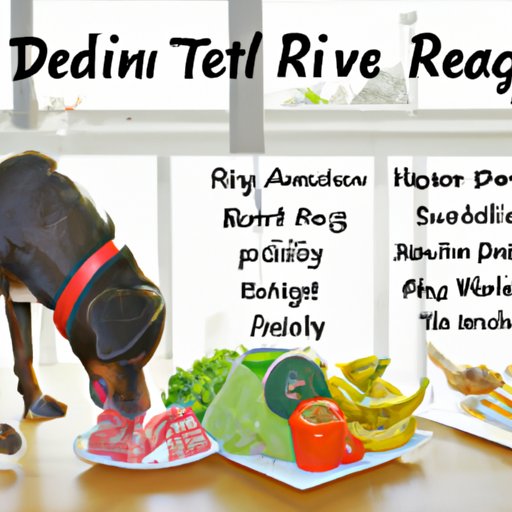Introduction
A raw diet for dogs is an increasingly popular dietary option that emphasizes fresh, unprocessed foods like meat, organs, bones, fruits, and vegetables. It is based on the premise that dogs should eat what their ancestors ate before they were domesticated. While it has its supporters, a raw diet for dogs also has its detractors. To help you decide if a raw diet is right for your pet, here’s a comprehensive guide to the pros and cons.
A Comprehensive Guide to Raw Diets for Dogs
Understanding the basics of a raw diet is key to determining if it’s the right choice for your pup. There are two main types of raw diets for dogs: pre-made and homemade. Pre-made raw diets are commercially available and typically come in frozen or freeze-dried form. Homemade raw diets are made with fresh ingredients and must be tailored to meet a dog’s nutritional needs.

What to Know About a Raw Diet for Dogs
When considering a raw diet for your dog, it’s important to understand the nutritional requirements and potential health benefits and risks. Dogs require essential fatty acids, proteins, vitamins, minerals, and other nutrients to stay healthy. A balanced raw diet should provide all the necessary nutrients in the correct proportions. However, there is some debate about whether a homemade raw diet can provide adequate nutrition for dogs.
Proponents of a raw diet for dogs cite numerous potential health benefits, including improved digestion, reduced allergies, better oral health, and increased energy levels. On the other hand, there are potential risks associated with feeding a raw diet, such as an increased risk of bacterial contamination and food-borne illnesses, as well as nutritional imbalances. It’s important to weigh the potential benefits and risks before making a decision.
Pros and Cons of a Raw Diet for Dogs
When deciding if a raw diet is right for your dog, it’s helpful to consider the pros and cons. The primary benefit of a raw diet is that it mimics a dog’s natural diet. This means that it contains unprocessed, wholesome ingredients that are closer to what a dog would eat in the wild. Additionally, raw diets are often more palatable than processed diets, so many dogs find them more enjoyable to eat.
However, there are some drawbacks to feeding a raw diet. For one, they tend to be more expensive than traditional kibble-based diets. Additionally, they require careful preparation to ensure that they are balanced and provide the necessary nutrients. Finally, since raw diets contain uncooked ingredients, there is a greater risk of bacterial contamination, which can lead to food-borne illnesses.

How to Transition Your Dog to a Raw Diet
If you decide to switch your dog to a raw diet, it’s important to transition them slowly. Start by introducing new foods gradually over the course of several weeks. Additionally, monitor your dog’s health during the transition to make sure they are adjusting well. If your dog shows any signs of distress or illness, discontinue the raw diet and consult your veterinarian.

Benefits of a Raw Diet for Dogs
There are numerous potential benefits of a raw diet for dogs. Improved digestion is one of the most commonly cited benefits. According to a 2017 study published in the journal BMC Veterinary Research, dogs fed a raw diet had significantly higher levels of beneficial bacteria in their gut compared to those fed a kibble-based diet.1 Additionally, raw diets have been shown to reduce allergies, improve oral health, and increase energy levels.
Conclusion
A raw diet for dogs can offer numerous potential health benefits, including improved digestion, reduced allergies, better oral health, and increased energy levels. However, there are potential risks associated with this type of diet, including a greater risk of bacterial contamination and food-borne illnesses. Before making a decision, it’s important to weigh the pros and cons and understand the nutritional requirements and potential risks. If you decide to transition your dog to a raw diet, do so gradually and monitor their health closely.
In conclusion, a raw diet may be a viable option for some dogs, but it’s important to do your research and consult with your veterinarian before making a decision.
(Note: Is this article not meeting your expectations? Do you have knowledge or insights to share? Unlock new opportunities and expand your reach by joining our authors team. Click Registration to join us and share your expertise with our readers.)
